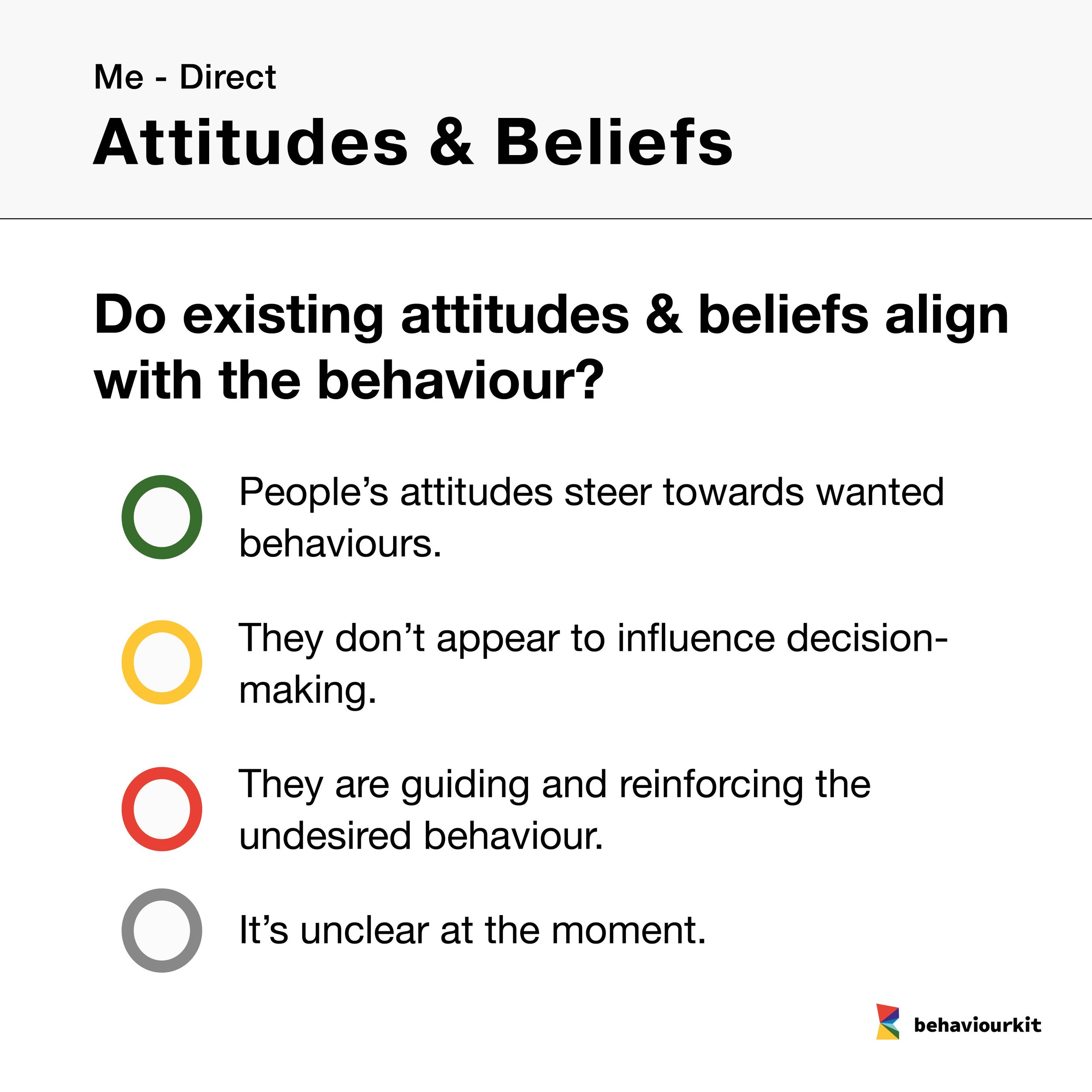MINDSPACE
MINDSPACE
Influence behaviour by understanding the underlying drivers.
Useful for:
Nudge
Communications
Project stage:
Design
The MINDSPACE framework offers a robust understanding of the nine powerful influences on human behaviour: Messenger, Incentives, Norms, Defaults, Salience, Priming, Affect, Commitments, and Ego. This broad and encompassing perspective makes it an indispensable tool for anyone aiming to influence behaviour effectively, be it in policy-making, organisational change or enhancing user experiences.
Applications:
MINDSPACE's wide-ranging utility spans across diverse sectors. In public policy, understanding societal norms or the role of incentives can shape more impactful regulations. Businesses can leverage MINDSPACE to understand consumer behaviour, thus creating resonant products and services.
Important reminders:
MINDSPACE isn't a quick fix to behaviour change. Its effectiveness relies on the context and a range of other factors.
Use MINDSPACE as a guide to challenge assumptions, deepen your understanding of behaviours, and innovate in your approaches to influencing them.
STEPS
Messenger: Who communicates matters.
Consider the source of the message. Whom your audience sees as a credible, trustworthy messenger can greatly affect the impact of your communication.
.Incentives: The sway of rewards and punishments.
Reflect on how incentives can be used to drive the desired behaviour. Remember, we tend to be loss-averse and value immediate rewards more than future ones.
.Norms: The power of social influence.
Explore the prevalent norms in the context of the behaviour you're targeting. We often align our actions with what we perceive as 'normal' or 'typical' within our social group.
.Defaults: The path of least resistance.
People often stick with pre-set options. Therefore, consider setting the desired behaviour as the default option.
.Salience: The pull of the novel and relevant.
We pay more attention to what is novel, relevant, or stands out. Use this to make the desired behaviour more salient.
.Priming: The nudge of subconscious cues.
Our actions can be subtly influenced by cues in our environment. Consider how you can prime the desired behaviour.
.Affect: The push of emotions.
Emotions can powerfully shape our actions. Look at how emotional responses can be used to encourage the desired behaviour.
.Commitments: The desire for consistency.
We like to act in ways that align with our commitments and reciprocate actions. Explore how public commitments can be used to drive the desired behaviour.
.Ego: The allure of self-enhancement
We act in ways that make us feel better about ourselves. Consider how the desired behaviour can be tied to positive self-perception.
Derived from:
The MINDSPACE framework was born out of an initiative by the UK Cabinet Office to integrate behavioural sciences into policy-making. Its development involved a collaboration between the Institute for Government, a UK think tank, and academics from the London School of Economics and Imperial College. The aim was to shift focus from solely rational, reflective decision-making towards understanding the automatic processes and biases that heavily influence our actions. The Behavioural Insights Unit went on to make EAST - a condensed version of MINDSPACE.

